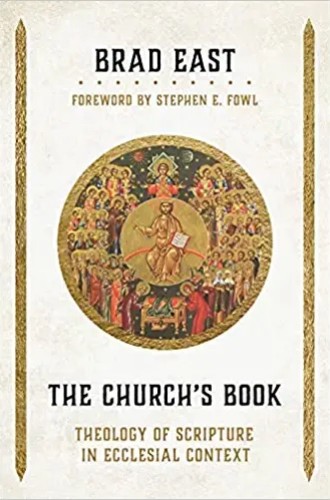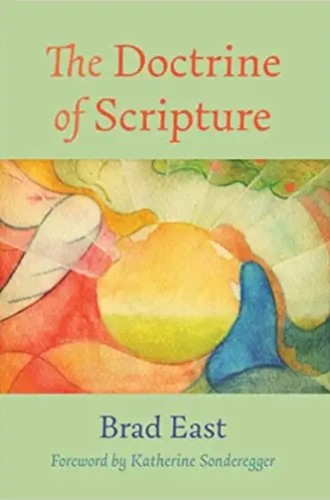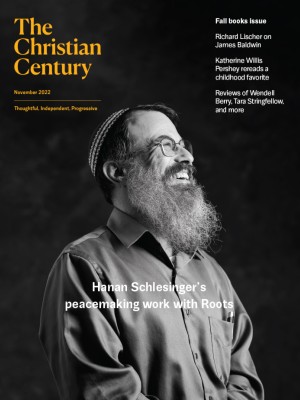We do not read alone
Brad East offers a rigorous argument for the ecclesial context of scripture.
How does our doctrine of scripture relate to what we believe about the church? And how does what we believe about the church shape how we think about and interpret scripture? Theologian Brad East takes up these questions in his two most recent books, which he considers companion volumes.
In The Church’s Book, East explores how two cornerstone doctrines, the doctrines of scripture and of the church, interact with each other. His premise is simple: our theological understanding of the church shapes and informs our understanding of what the Bible is—and, it follows, of how to read the Bible. While this premise is presumably a given for most people who stop to think about it, the details of how a person’s theology of the church relates to their understanding of scripture are anything but simple.
Read our latest issue or browse back issues.
To explore his premise, East invites us into a conversation with three influential theologians: John Webster, Robert Jenson, and John Howard Yoder. (Readers might flinch at the inclusion of Yoder—a choice which East devotes an entire chapter to explaining, in which he acknowledges that it might be the wrong choice. We leave that judgment to the reader.)
These three theologians stand on common ground as followers of Karl Barth, especially Barth’s understanding of scripture. Each of them wrote extensively on the doctrine of scripture while standing firmly in three distinct theological traditions: Reformed (Webster), Lutheran/Catholic (Jenson), and Anabaptist (Yoder). Their distinct ecclesial positions make them a useful case study in how someone’s ecclesiology shapes what they think the Bible is, what it is for, and how to read it. Although these three men represent only a portion of the church’s ecclesiological expressions, East has started an important conversation for those interested in doing theological interpretation together across ecclesial lines.
East writes with engaging confidence as he moves through the writings of Webster, Jenson, and Yoder. It is no small contribution to offer charitable and careful interpretations of these three men’s doctrines of scripture. But East goes beyond the descriptive. The Church’s Book begins to lay the groundwork for an account of what scripture is. He gestures toward this in the final two chapters of The Church’s Book and turns to it more fully in The Doctrine of Scripture.
The latter book feels like it’s written to a more immediate audience: his students. East teaches at Abilene Christian University, in the heartland of American evangelicalism. If you live in Texas, like we do, it’s not hard to imagine him strolling through coffee shops filled with young Christians, their note-scribbled Bibles open, wondering how their underlined words will reveal God’s presence to them. East, we imagine, invites these students to deepen their reading practices and to move from the individual toward the communal, showing how scripture can be more fully understood within the economy of salvation and the historic faith of all God’s people. East’s basic word to his students is this: scripture needs the church as much as the church needs scripture.
Since the Reformation, scripture has slowly become regarded as the self-authenticating source of gospel truth. The first section of the Westminster Confession, for instance, asserts that scripture’s “authority does not depend on the testimony of any man or church but completely on God.” However, East charges, this is a fundamental misunderstanding of the nature of God’s speaking. God’s speech is always bound up with the ordinary habits of creaturely speaking. God speaks in and as we speak to one another. Accordingly, scripture is not just truth but also witness. East is vehement about an axiomatic claim: scripture is unintelligible apart from the life—and the witness—of all God’s people through the centuries. After all, scripture is the church’s book.
One question lingers for us. What, if any, is the place of dissonance and division in a proper doctrine of scripture and the church?
For example, East eloquently weaves together a Roman Catholic concept of “confection” with a Reformed concept of “sanctification.” He does this to show how the historical coming-into-being of scripture, with its redactors and alterations, does not jeopardize the Spirit’s movement through the text. Just as the historical person of the priest, with whatever faults and contingencies, acts in persona Christi at the communion table, so too the historical developments of scripture are avenues through which the Spirit moves to speak. Creative and eclectic engagements like this make The Doctrine of Scripture an exciting read. Yet East travels quickly through the differences between the two interpretative traditions he’s comparing with few caveats. Is there ever a danger that the road to unity is sought by smoothing over potentially generative areas of tension?
East is forthcoming about his dismay at a splintered church. A divided church, he agrees with Jenson, is a self-contradiction. Still, without baptizing difference and disagreement, can we ask what it might teach us about hope? Hasn’t it often been the action of God through a church in crisis that has given the church her greatest creeds and confessions? After all, in scripture—whether it’s the parting of waters in Genesis, the splitting of a temple sacrifice, or the piercing of Christ’s riven body—division is often the place where life begins.
These two books are works of devotion as much as scholarship. East cares about thinking through the doctrines of scripture and the church, but he cares equally about the church’s faithful engagement with scripture—or, perhaps more accurately, about the church faithfully seeking the God revealed in scripture. Beyond offering a rigorous argument for the ecclesial context of scripture, these works challenge readers to trust that the Holy Spirit has long been inspiring the faithful. East reminds us that when we read scripture, we never do so alone. We read within a great cloud of witnesses, from whom we received the church’s book by God’s providence and through whom we are taught to read the church’s book faithfully.
Modern habits of reading—from the Bible Belt to the ivory tower—can lead us into isolation and rootlessness. Scripture’s meaning, we are taught, either is about the Spirit-awakened relationship between reader and text or is historically and socially located like that of any other text. These ways of reading are not wrong so much as they are diminished. They do not adequately appreciate the richness of reading scripture in and with the church, hearing together God’s word for the people of God across all times and all places.
East suggests that we can be liberated from the illusion that each passage of scripture means only one thing and that it is up to us to figure it out. Instead, we read in faith, perhaps individually at times but never alone, letting the creeds of the early centuries or the wisdom of faithful friends help us again and again as we receive Christ’s voice.








